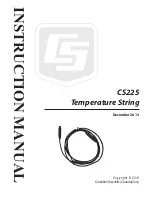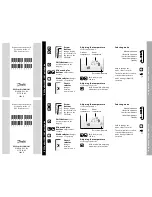
WAGO-I/O-SYSTEM 750
CANopen Master and Slave 245
750-8215 PFC200; G2; 4ETH CAN USB
Manual
Version 1.2.0, valid from FW Version 03.02.02(14)
10.3
Data Exchange
Process data exchange occurs via the communication objects with the CANopen
fieldbus controller.
Each object consists of a CAN telegram with a maximum of 8 bytes process data
and a COB (Communication Object Identifier) ID that is unique within the
network.
These communication objects transmit data, trigger events, signal error statuses,
etc.
The parameters required for the communication objects, as well as CANopen
device parameters and data are stored in an object directory.
10.3.1
Controller Communication Objects
The PFC200 supports the following communication objects:
512 Tx-PDOs for process data exchange from input data of the fieldbus node
512 Rx-PDOs for process data exchange from output data of the fieldbus node
Synchronization objects (SYNC) for network synchronization
Emergency objects (EMCY)
Network management objects
-
Module Control Protocols
-
Error Control Protocols
-
Boot-up Protocol
10.3.2
Fieldbus-Specific Addressing
T
he CODESYS variable for the CAN bus (%QB6000 … %QB9999 and %IB6000
… %IB9999) are mapped to an object directory after configuring the CAN
interface as a master or slave (initialization). A CANopen fieldbus device uses the
16-bit indices and 8-bit sub-indices of the object directory to address data via
PDOs or SDOs and to access the data. The position of the data in the process
image is therefore not directly significant for the CANopen user at the fieldbus
end.
The variables entered into the object directory are distinguished by data type
(Integer8, Unsigned8, Boolean, Integer16, etc.) and by input/output. Access via
PDOs can be either for reading or writing. Direct access via SDO can be read-
only.
















































